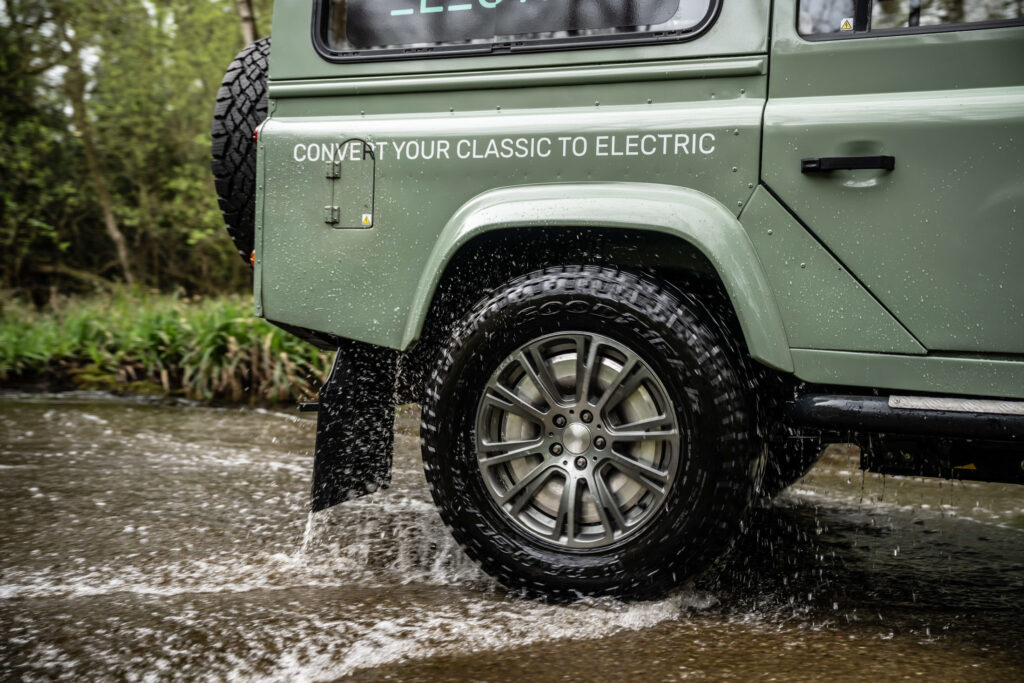Four in-wheel motors generate 483 hp and the same retrofit tech could be applied to other classic cars
3 hours ago
 –>
–> 
–>
- Four in-wheel motors replace Defender’s petrol or diesel engine.
- Total power of 483 hp is way in excess of what original ICE version offered.
- 75 kWh battery can be charged to 80 percent in 45 minutes.
There are plenty of firms turning classic cars – including Land Rovers – into EVs, but UK-based Bedeo’s new Land Rover Defender conversion is unusual because it uses in-wheel motors.
In-wheel, or hub-motor, tech is something we’ve seen plenty of times on concept cars, but almost none of the the new EVs you can buy, or any of the restomod EV conversions available, have gone down that route. Most place an electric motor where a combustion one would normally sit, and drive the wheels through ICE-car-style driveshafts. But the first car from Bedeo’s Reborn Electric: Icons series powers its wheels with power generated within them.
Related: Everrati’s Latest Electromod Is A Land Rover Defender Designed For Yacht Owners
Four hub motors develop a combined 483 hp (490 PS / 360 kW) and allow individual control of the torque to each wheel. A 75 kWh battery gives an estimated range of 154 miles (247 km), which isn’t great, but then the original Defender is incredibly un-aerodynamic and also so hideously uncomfortable on long journeys that it’s probably plenty.
Bedeo says a standard 22 kW on-board charger can fill the battery completely in five hours, or you can achieve an 80 percent fill in 45 minutes (90 minutes to 100 percent) if you have access to a 50 kW supply.
Using hub motors allows Bedeo to junk the Landie’s driveshafts, which saves some weight, although the unsprung mass at each corner is presumably much greater with all the electric guts dangling at the end of each suspension coil together with the brakes and wheels themselves. But judging from these images of the prototype creating a splash, the Defender hasn’t lost its love for water.

Bedeo says its Reborn Electric: Icons series will soon be extended beyond the Defender because the same in-wheel hardware could be applied to any number of other classics and non-classics – the company already has a thriving business converting vans, trucks and buses to electric power for fleet operators. It even makes EV kits for marine applications, allowing boat builders to offer their customers an electric option when speccing their new watercraft.
There’s no indication of how much the electric Defender will cost, but we’re guessing the modern Defender EV Land Rover is currently developing will be faster, more affordable and have a longer range, albeit without the charm/flaws of the converted old timer.

 <!–
<!– –>
–> 
